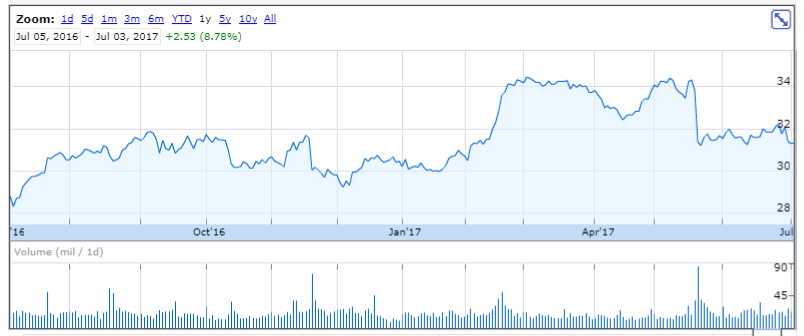Written by The Acquirer’s Multiple
One of the cheapest stocks in our box is Cisco Systems, Inc.(Nasdaq:CSCO).
Cisco Systems, Inc. (Cisco) designs and sells a range of products, provides services and delivers integrated solutions to develop and connect networks around the world. The company operates through three geographic segments: Americas; Europe, the Middle East and Africa (EMEA), and Asia Pacific, Japan and China (APJC).
A quick look at the company’s share price history over the past twelve months shows that the price is up 9%, but my valuation below indicates that Cisco is clearly undervalued. Here’s why.

eak_kkk / Pixabay

The following data is from the company’s latest financial statements, dated March 2017.
As always I like to start with the balance sheet. The latest balance sheet shows that Cisco has $8.116 Billion in cash and cash equivalents and $59.858 Billion in short term investments which equates to $67.974 Billion in cash and cash equivalents. Further down the balance sheet we can see that the company has short-term debt of $4.248 Billion and long-term debt of $28.222 Billion which equates to $32.470 in total debt. If we subtract the total debt from the total cash and cash equivalents we get $35.504 Billion in net cash and cash equivalents.
Cisco currently has a market cap of $156.587 Billion, so if we subtract the net cash and cash equivalents totaling $35.504 Billion we get an Enterprise Value of $121.147 Billion.
If we move over to the company’s latest income statements we can see that Cisco had $12.911 Billion in operating earnings over the trailing twelve months which means that the company is currently trading on 9.37, or 9.37 times operating earnings. That places Cisco squarely in undervalued territory.
The Acquirer’s Multiple is defined as:
Enterprise Value/Operating Earnings*
*We make adjustments to operating earnings by constructing an operating earnings figure from the top of the income statement down, where EBIT and EBITDA are constructed from the bottom up. Calculating operating earnings from the top down standardizes the metric, making a comparison across companies, industries and sectors possible, and, by excluding special items–income that a company does not expect to recur in future years–ensures that these earnings are related only to operations.









Leave A Comment